Why Is the Sun Red? All About the Air Quality Index and What It Means for Your Health
Here's why the sun has taken on a vibrant, bloodshot shade amid hazy skies across the Unites States
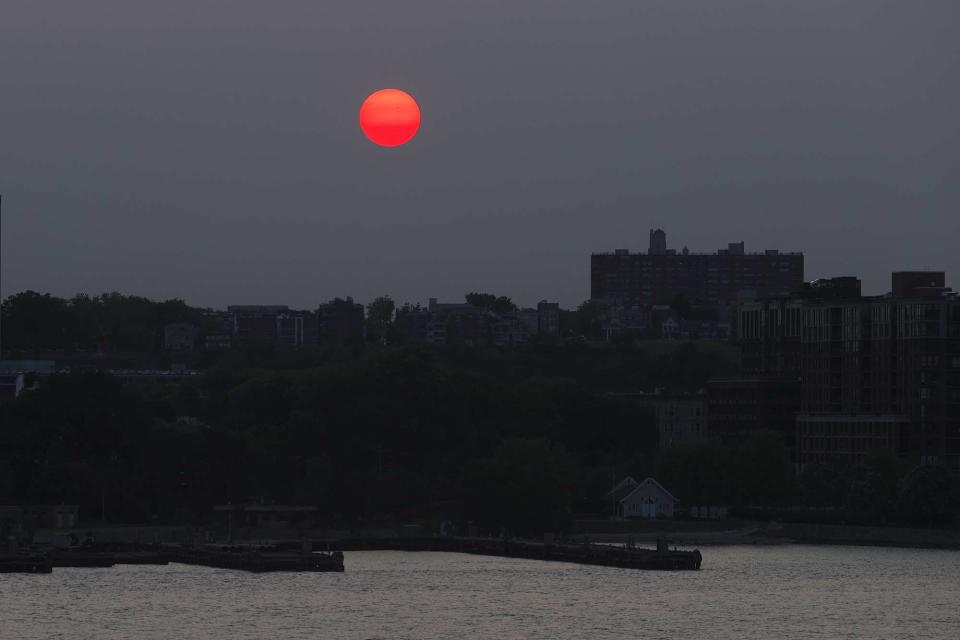
Selcuk Acar/Anadolu Agency via Getty
If you're wondering why the sun has looked like a giant fireball in the sky, there's an explanation.
Residents across the United States — particularly states in the Midwest, mid-Atlantic and Northeast — have noticed the sun take on an unfamiliar orange-red hue throughout the early days of June. According to national weather experts, an international factor is in part the reason why.
Since the beginning of May, Canada has experienced "ferocious” wildfire activity, an amount deemed atypical this time of year by the National Environmental Satellite, Data and Information Service. "Roughly a million acres have burned, and more than 29,000 people in Alberta and British Columbia were forced to evacuate their homes," the organization gathered.
According to the Canadian Red Cross, most wildfires typically occur between April and September each year. However, as of May 6, a provincial state of emergency was declared in Alberta (Western Canada) — and as of June 5, "the worst impacted" was reportedly Quebec (Eastern Canada).
"The distribution of fires from coast to coast this year is unusual," Michael Norton, an official with Canada's Natural Resources ministry, told Reuters. "At this time of the year, fires usually occur only on one side of the country at a time, most often that being in the west."
Related: All About June's Strawberry Moon and What It Means for Your Zodiac Sign
Furthermore, Canadian government officials are predicting the "worst-ever year of wildfire destruction," a rate that "could hit record levels for area burned this year" if it continues. Fortunately, cooler temps and scattered rain have helped firefighters combat the flames, but large amounts of smoke continue to fill the sky.
So what does this have to do with the sun in the United States? Meteorologist Terry Eliasen told CBS News that the smoke has caused a haze over parts of the northeastern and mid-Atlantic U.S. as it wafts over the region.
The haze, combined with the smoke particles high in the sky, explains why the sun has taken on a shade more vibrant than usual. And while the phenomenon may be a sight to behold, air quality advisories have been put into effect as a result.
Read on to learn more about why the sun looks red and what the air quality index means for your health.
Why does the sun look red?
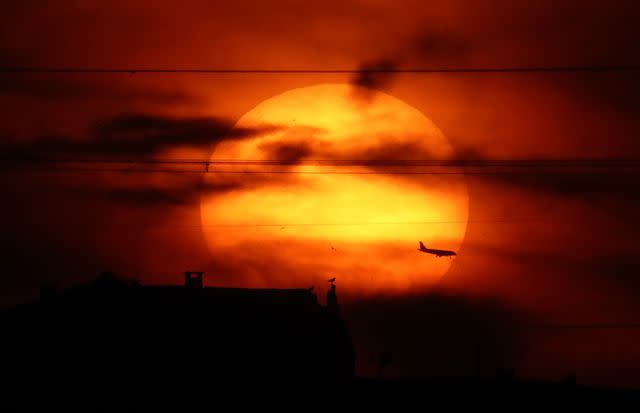
Isa Terli/Anadolu Agency via Getty
Near the end of May this year, the sun appeared a blood-red color for many parts of the United States, ranging from Chicago to New York. According to The Weather Channel, this phenomenon has been attributed to the massive wildfires in Canada's Alberta region.
"All the burning and scathing has led to smoke particles being blown 2,000 kilometers away, piggybacking jet streams and crossing borders into the US. Apart from creating haze-like conditions over both countries, the smoke also filtered out sunlight in a very tricky way, making the Sun appear bloodshot," the outlet reported.
The reason is complex, as "the particles of the smoke absorbed all the shorter wavelengths of light, such as blue and purple," the outlet added. This then leaves "only red and orange rays in their wake," resulting in the sun's new vibrant appearance.
According to The Weather Channel, this is "the same phenomenon that makes the oceans appear blue, albeit reversed to absorb the redder part of the light spectrum." While the sight may be fascinating to look at, the outlet considers it "a grim reminder of the detrimental effects of climate change."
Related: Everything to Know About the Full Moons in 2023
What does an air quality health advisory mean?
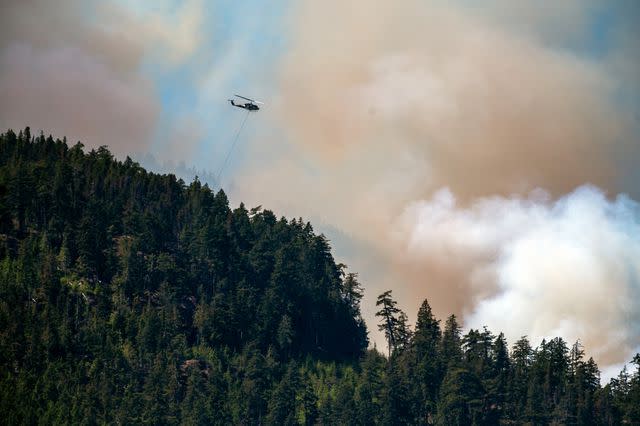
James MacDonald/Bloomberg via Getty
Many regions across the United States are being impacted by the Canadian wildfires and air quality health advisories have been put into effect as a result. According to the National Weather Service, the air quality index "tells you how clean or polluted your air is, and what associated health effects might be a concern for you" on the daily."
Conditions that can negatively impact air quality include wildfires, dust storms and smoke — all of which "can still cause problems in your area" even "if they are hundreds of miles away," the service reports. When an air quality alert is in effect, there are several tips to stay safe.
The National Weather Service suggests to stay inside if possible (particularly if you have respiratory concerns or other health problems), limit the amount of time you are out to strictly essential activities if you must and don't burn debris or other items during an alert.
Above all, the service lists "staying informed" as one of its top tips since areas throughout the United States are affected differently. Residents can do this by listening to NOAA (The National Oceanic and Atmospheric Administration) Weather Radio or keeping up with local news outlets.
Which parts of the U.S. have issued air quality advisories?
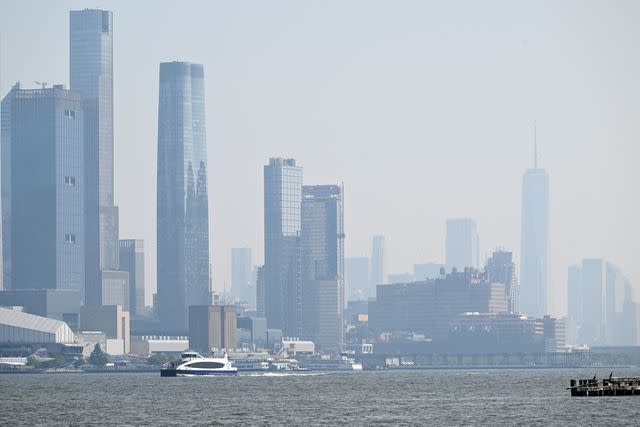
Lokman Vural Elibol/Anadolu Agency via Getty
The blazes raging in the eastern provinces of Quebec and Nova Scotia are wafting smoke into the New York City area, with air quality alerts in effect for the five boroughs as well as Long Island, the Hudson Valley and parts of Connecticut. Plus, a "red flag warning" has been issued for much of New Jersey because of an elevated fire risk.
Residents in the mid-west have been seeing the effects of the Canadian fires, stretching from Ohio Valley to as far south as the Carolinas. Air quality advisories were put into effect on June 5 in southeastern Minnesota and parts of the Upper Peninsula of Michigan, as well as in more than 60 counties in Wisconsin.
“A band of smoke from wildfires in Quebec will continue to linger across east central and southeast Minnesota today due to very light winds,” the Minnesota Pollution Control Agency tweeted, while noting that air quality should improve in the night since thunderstorms help break up the smoke particles from the air.
While various states in the Midwest, mid-Atlantic and Northeast are currently being affected, be sure to check your local news outlets and listen to NOAA Weather Radio — per the National Weather Service's suggestion — to stay informed on the air quality in your area.
How will poor air quality affect your health?
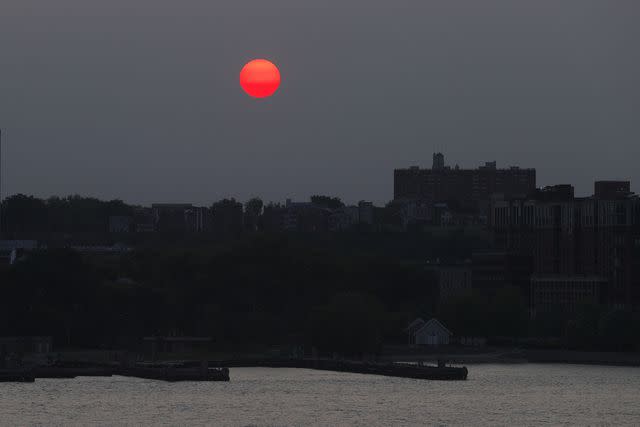
Selcuk Acar/Anadolu Agency via Getty
NOAA, in partnership with the Environmental Protection Agency (EPA), issues daily air quality forecast guidance as part of a national Air Quality Forecasting Capability with the goal to limit the harmful effects of poor air quality in the United States.
"Smoke and other emissions (nitrogen oxides and organic compounds) from wildfires can decrease downwind air quality through increased ozone and airborne particle concentrations," the organization reported on June 2.
With various air quality advisories issued, "even healthy people may experience health effects from the smoke, while sensitive groups may experience even more serious effects," reported the Fox Forecast Center. However, the degree in which people feel the effects depends on individual health and the air quality in their area.
To learn more about air quality and how it might affect you and your area, read more on the National Weather Service's official website.
For more People news, make sure to sign up for our newsletter!
Read the original article on People.

